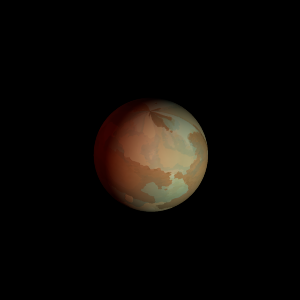|
|
Space Astro
|
Info for exoplanet "Tsumage"
| Scientific (actual) data |
|---|
| Name | Kepler-814 b |
| Planet status | Confirmed |
| Radius | 0.189 |
| Orbital period | 6.14699 |
| Discovered | 2016 |
| Updated | 2021-02-05 |
| Tconj | 2454970 |
| Publication | Announced on a website |
| Detection type | Primary Transit |
| Alternate names | 2MASS J18593851+4825539 b, K01312.01, KIC 10963242 b, KOI-1312 b, KOI-1312.01, WISE J185938.52+482553.7 b |
| Star name | Kepler-814 |
| Right ascension | 284.91° |
| Declination | 48.43° |
| Mag j | 13.713 |
| Mag h | 13.415 |
| Mag k | 13.418 |
| Star distance | 1327 |
| Star metallicity | 0.01 |
| Star mass | 1.15 |
| Star radius | 1.22 |
| Star age | 3.02 |
| Star temperature | 6162 |
| Star alternate names | 2MASS J18593851+4825539, KIC 10963242, KOI-1312, WISE J185938.52+482553.7 |
| Wikipedia article | Kepler-814 b |
Back
| |
| Fictional info (?) |
|---|
| Suggested name | Tsumage |
| Planet type | Cold planet |
| The volume of water detected has been estimated to be equivalent to the volume of water in Lake Superior.
A prominent result is the "great green spot", a giant storm that is known to have existed for centuries since it was first detected by scanner. |
| Atmosphere | Neon | 53% |
| Nitrogen | 24% |
| Sulfur dioxide | 21% |
| Hydrogen deuteride (HD) | 0.65% |
| Formaldehyde | 0.0019% |
| Carbon dioxide | 0% |
| Atmospheric pressure | 0.001 bar |
 |
| No known satellites |
| Google search for Tsumage |
|
Website by Joachim Michaelis
|
|
|
|